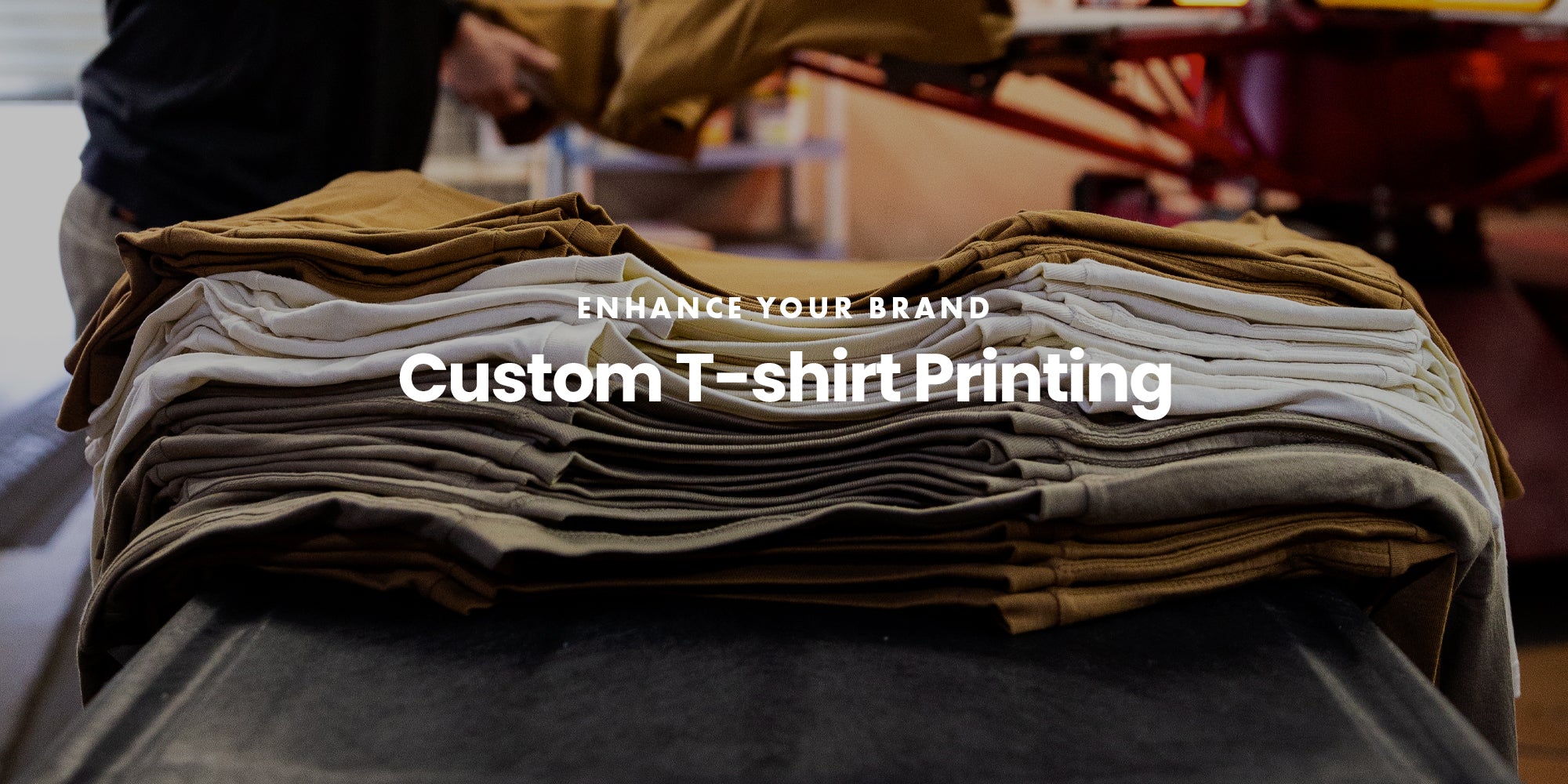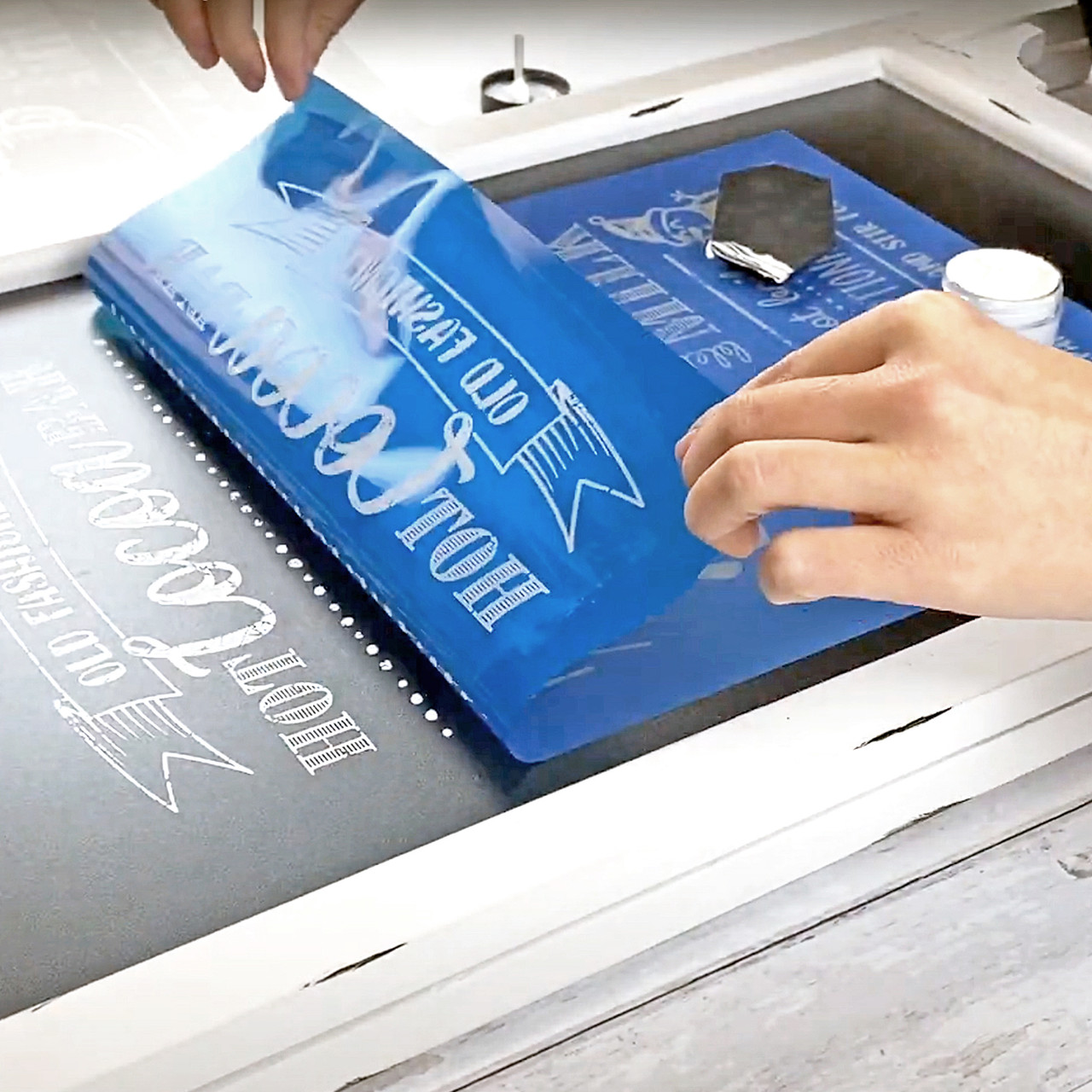Vintage Style Silk Screen Printing for Retro Fashion
Vintage Style Silk Screen Printing for Retro Fashion
Blog Article
Display Printing Uncovered: Everything You Required to Know Regarding Tee Shirt and Garment Printing Techniques
Display printing is a fascinating technique that integrates art with method, providing countless possibilities for creativity. All set to discover the crucial elements that make display publishing an art form?
The Basics of Display Printing: Just How It Functions
When you plunge into display printing, you'll uncover it's both a science and an art. At its core, screen printing entails producing a stencil, or screen, that permits ink to pass with only in certain areas.
Setting the screen over the fabric, then utilize a squeegee to push ink through the display onto the garment. Each step is crucial, and grasping them will boost your display printing abilities, transforming basic garments right into one-of-a-kind, expressive pieces.
Sorts Of Display Printing Strategies
When you grasp the basics of display printing, it's time to discover the numerous methods that can elevate your designs. One popular technique is traditional screen printing, where ink is pressed via a stenciled screen.
If you're going for great information, take into consideration discharge printing. This method eliminates dye from the material, leaving a soft, vintage look. Another option is plastisol printing, recognized for its resilience and vivid colors, making it a favorite for lots of brand names. Experiment with halftone printing to create gradient effects and intricate layouts. Each method has its unique beauty, so do not wait to attempt them out to discover what fits your style best!
Essential Tools for Screen Printing
To accomplish magnificent lead to display printing, having the right devices is basic. You'll need a durable screen printing framework, which holds the mesh that transfers your design onto the garment. Next, purchase high-grade mops; these are vital for applying ink equally across the screen. You'll likewise call for a good exposure system to create your screens, as well as a washout booth for cleaning them after usage. A trusted heat source, like a conveyor dryer or warm press, is important for healing your prints to ensure long life. Don't neglect a proper office, equipped with tables and storage space for your supplies. Finally, protective gear, such as masks and gloves, will maintain you secure from chemicals and inks. With the right devices, you'll be well on your way to creating professional-quality prints.
Choosing the Right Inks and Products
When choosing inks and products for screen printing, you require to take into account the sort of ink that functions finest for your job. Think of material compatibility to assure your designs look last and fantastic lengthy. Likewise, check out environmentally friendly ink alternatives to make your printing process much more lasting.
Sorts Of Screen Inks
Choosing the appropriate display ink is crucial for achieving vibrant, durable prints that fulfill your task's demands. There are a number of kinds of display inks to analyze. Plastisol ink is preferred for its adaptability and ease of use, giving exceptional shade opacity on dark textiles. Water-based ink, on the other hand, supplies a softer feeling and is green, making it excellent for those wanting to decrease their ecological influence. Release inks get rid of color from the textile, causing a soft, vintage appearance but require specific handling. Specialty inks, such as metal or glow-in-the-dark, can include special results to your designs. Assess your job requirements and pick the ink that lines up best with your preferred outcome.

Fabric Compatibility Factors To Consider
Recognizing fabric compatibility is vital for attaining top notch screen prints, specifically considering that different materials react distinctly to numerous inks. When choosing inks, consider the textile type-- cotton, polyester, or blends. For cotton, water-based inks work well, offering soft qualities and breathability. Polyester, on the various other hand, typically requires plastisol inks for far better bond and vibrant colors. You might need to utilize a combination of both types if you're printing on blends. Always check your inks on sample fabric to assure they adhere properly and preserve color stability. In addition, remember that material weight and texture can affect the last end result, so selecting the right ink and product combo is important for your job's success.
Eco-Friendly Ink Options
Environment-friendly inks are ending up being a prominent choice for display printers that intend to lessen their ecological influence while keeping high quality. When choosing inks, consider water-based inks, which are less dangerous and much easier to clean up compared to traditional solvents. These inks bond well with materials, supplying lively outcomes without poisonous chemicals. You could additionally discover eco-solvent inks that use less unstable natural substances (VOCs), making them a more secure alternative for both your health and wellness and the world.
Furthermore, try to find inks made from eco-friendly sources, such as soy or vegetable-based options. By selecting the right inks and products, you'll not only develop magnificent designs but additionally add to an extra lasting printing process. Make the switch, and your prints will reflect your commitment to the environment!
Preparing Your Layout for Screen Printing

File Style Demands
To assure your layout looks vibrant and sharp on fabric, you'll require to pay close interest to submit format requirements for screen printing. Begin with vector documents like AI or EPS, as they can be scaled without losing high quality. If you make use of raster pictures, select high-resolution files, such as TIFF or PNG, ideally at check that 300 DPI. Stay clear of making use of JPEGs, as they can lose clearness when resized. Make certain your layout has a transparent background to protect against unwanted white sides on your prints. Maintain color modes in mind; CMYK is common for screen printing, so transform your RGB designs as necessary - screen printing kit. By following these standards, you'll set your art work up for a successful print.
Color Separation Methods
Color splitting up is an essential step in preparing your design for screen printing, and understanding it can substantially improve your print top quality. You'll need to break your style right into specific colors, as each shade calls for a separate screen during printing. This accuracy not only guarantees accurate shade depiction yet additionally enhances the printing procedure.
Resolution and Size
Attaining the best lead to display printing starts with assuring your design has the ideal resolution and size. Preferably, your art work ought to be at least 300 DPI (dots per inch) for sharp, clear prints. Your final item might look pixelated and unprofessional. if you utilize reduced resolution.
When it involves dimension, take into consideration the measurements of your print area. Style your artwork to match the last print dimension, ideally creating it in the real measurements you'll be publishing. In this manner, you'll stay clear of any unexpected scaling issues.
Constantly check your design in both vector and raster formats. Vector graphics can be scaled without losing quality, making them ideal for display printing. Preparing correctly will guarantee your design looks outstanding on every garment!
Step-by-Step Screen Printing Process
Display printing is a vibrant process that allows you to produce dynamic designs on numerous surface areas. To get going, you'll require a display, emulsion, and your picked ink. Prepare your display by cleansing it extensively. Next off, use the solution equally and let it dry in a dark location. When completely dry, expose your display to light with your layout positioned on it, which will solidify the emulsion where the light hits, producing a stencil - screen printing kit.
Put ink onto the display and utilize a squeegee to press the ink via the stencil onto the textile. Raise the screen very carefully and allow the print dry. You've efficiently screen published your layout.
Tips for Effective Display Printing Projects
While you're diving into your display printing jobs, keep in mind that prep work is crucial to success. Beginning by gathering all your products-- inks, screens, garments, and mops. A clean office assists stop unwanted mistakes, so clean up prior to you begin.
Following, verify your art work is high-resolution and appropriately sized for your garment. Check your display for appropriate exposure and clean it extensively to avoid spots. When blending your inks, follow the manufacturer's guidelines to attain the right consistency.
During printing, use also stress with your squeegee for constant outcomes. Don't hurry; take your time to verify each print satisfies your click to find out more criteria. After printing, allow your garments completely dry completely before managing or packaging them.
Lastly, constantly keep an example of your job for future recommendation. This method, you can evaluate your progression and enhance your methods in time. Happy printing!

Frequently Asked Concerns
For how long Does It Require To Set up a Screen Printing Task?
Establishing a display printing work generally takes around half an hour to an hour. You'll prepare the screens, mix inks, and readjust the press. The moment differs based upon complexity and experience, so stay arranged!
Can I Print on Different Textile Enters Utilizing the Exact Same Technique?
Yes, you can publish on various material types making use of the exact same technique, yet you'll need to change your settings and inks. Some textiles absorb ink differently, so experimenting guarantees the very best results for every product.
What Are Typical Blunders to Avoid in Screen Printing?
When screen printing, avoid usual mistakes like using the wrong ink, ignoring appropriate direct exposure times, or avoiding pre-press checks. Always examine your configuration and preserve tidy screens to assure top quality results each time.
How Can I Correctly Tidy and Preserve My Screen Printing Devices?
To effectively clean and preserve your screen printing devices, you must regularly wash screens with ideal solvents, examine squeegees for wear, and assure all tools are kept completely dry and dust-free. Consistency prevents costly repair work and boosts performance.
Is Display Printing Environmentally Pleasant Contrasted to Various Other Approaches?
Screen printing can be much more eco-friendly than various other techniques, specifically if you use eco-conscious materials and water-based inks. By selecting sustainable supplies and techniques, you lower waste and lessen your influence on the world.
Screen Printing Uncovered: Whatever You Required to Know Regarding Tee Shirt and Garment Printing Strategies
At its core, screen printing includes creating a pattern, look these up or screen, that enables ink to pass with only in specific areas. Setting the screen over the fabric, after that make use of a squeegee to push ink with the display onto the garment. One preferred approach is standard display printing, where ink is pushed with a stenciled screen.When choosing inks and materials for display printing, you require to take right into account the kind of ink that functions ideal for your job.
Report this page